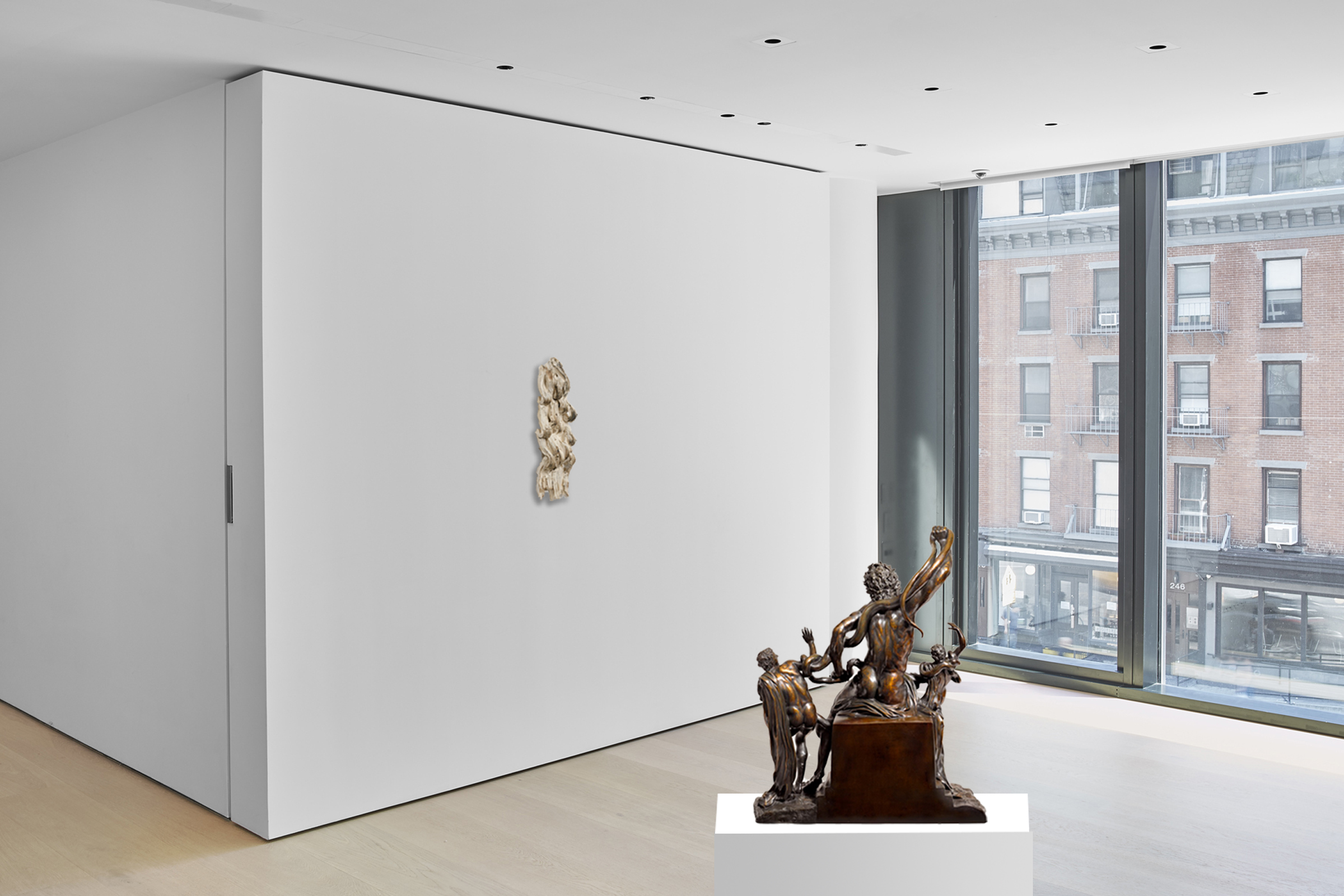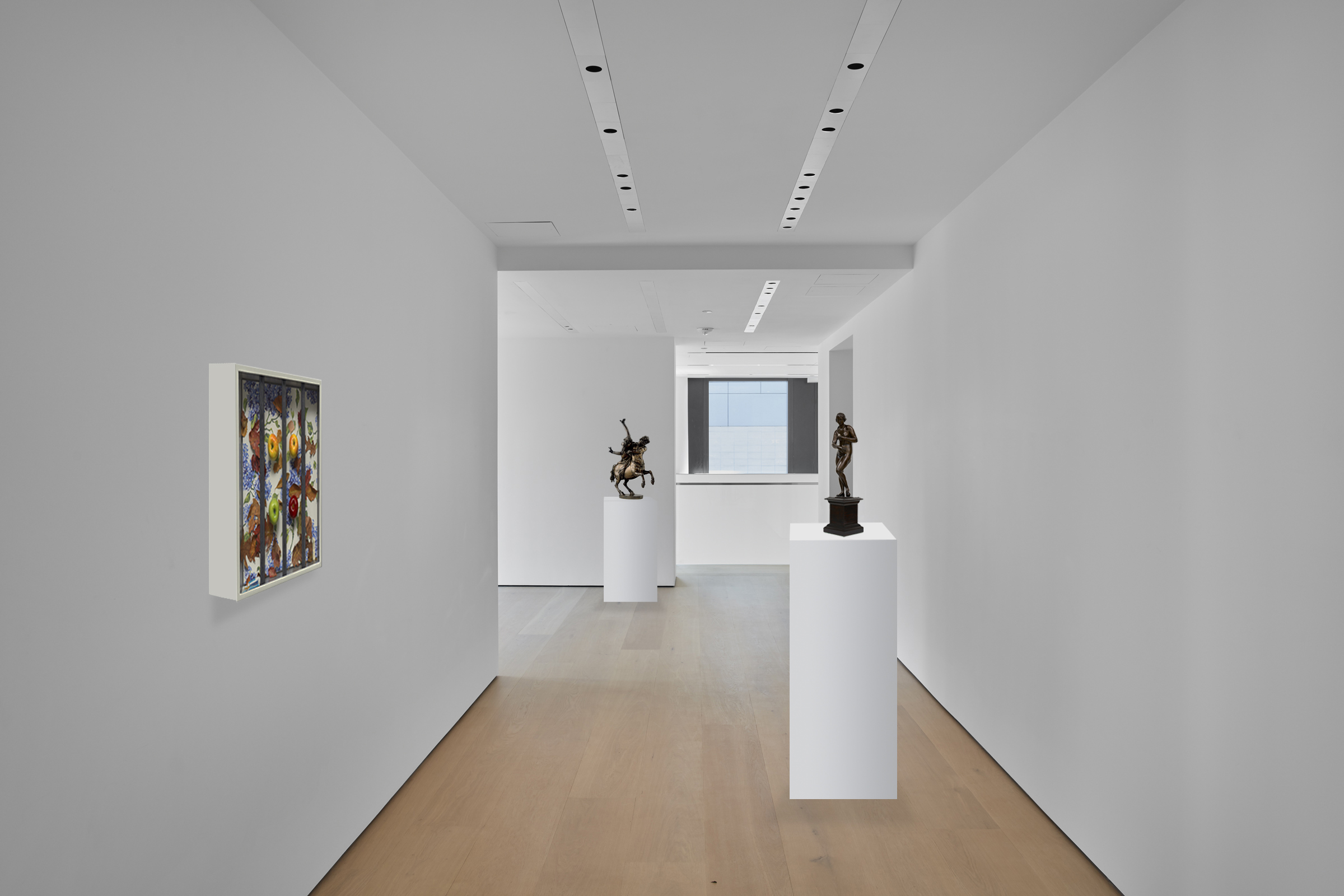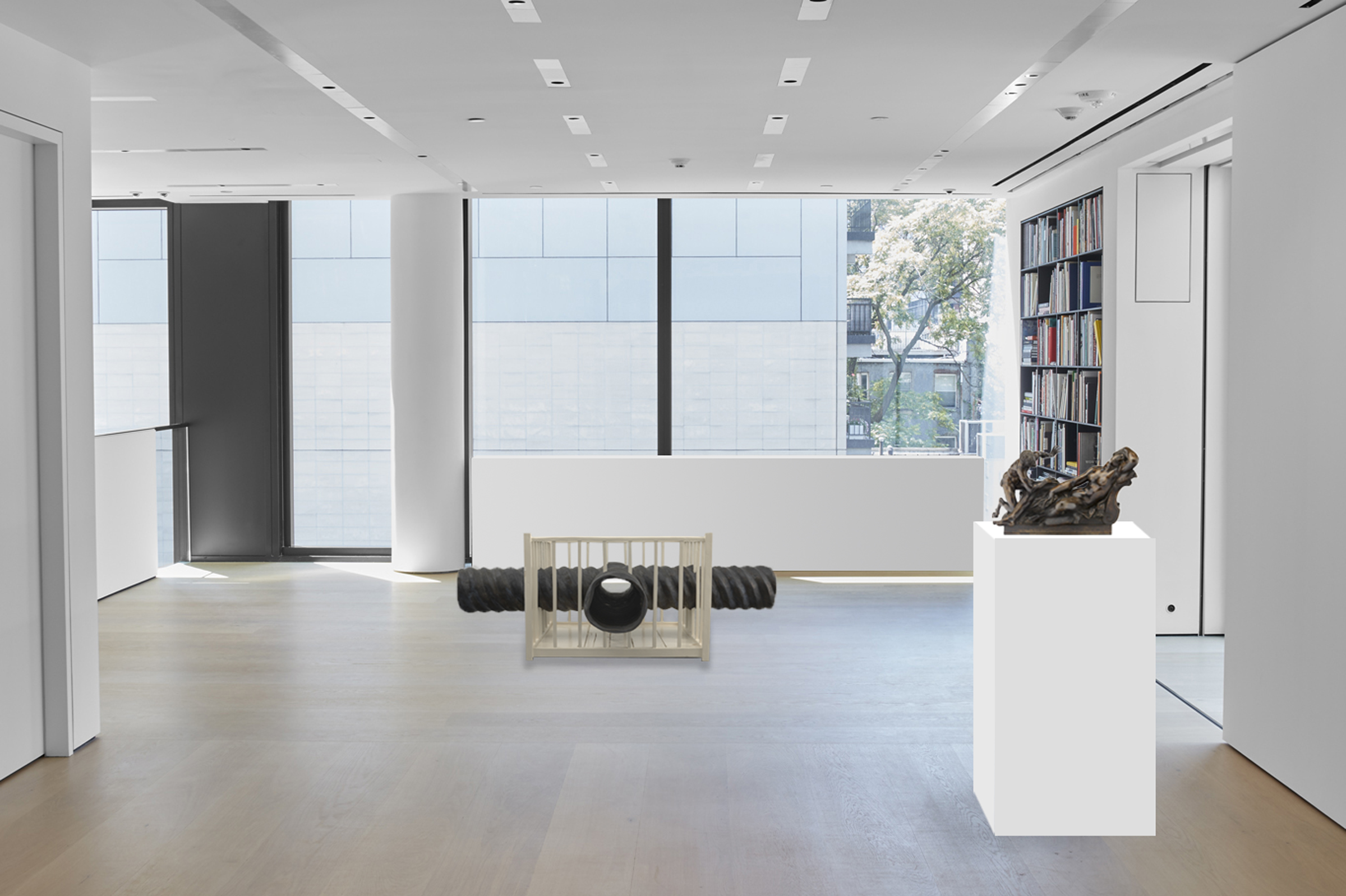Virtual ExhibitionOf Weight and Motion: European Bronze Statuettes in Dialogue with Sculptures by Noguchi, Glynn, Gober, and BeasleyCurated by Denise Allen
Renaissance and Baroque bronze statuettes are small-scale sculptures depicting human figures that comprise a vibrant part of The Hill Collection. Flourishing in Europe from around 1450 to 1800, the genre includes subjects drawn from Greco-Roman mythology and the Christian tradition. Although most statuettes are only around one foot tall—all engage viewers with a directness that transcends their small size. In its fiery molten state bronze assumes the shape of any mold into which it is poured. The metal’s protean character granted Renaissance and Baroque sculptors the freedom to invent figures in endlessly expressive poses that mirror the human condition and intangibly evoke something more.
The Hill Renaissance and Baroque statuettes resonate with contemporary sculptures in the collection, prompting the dialogues introduced in this exhibition. Although the juxtapositions between statuettes and contemporary works are virtual, only sculptures that would harmonize with each other in real life were chosen. The contemporary sculptures were selected because they address nature, the human figure, and lived experience in ways that connect to the by-gone world of bronze statuettes. And even though many small bronzes were made to delight the sense of touch, only statuettes originally designed to be seen and not handled were considered. The constraints of virtual exhibitions as well as of gallery installations were embraced to give viewers a realistic basis from which imaginatively to wander. Inspired by Isamu Noguchi’s Of Weight and Motion, this exhibition explores the practical, expressive, and conceptual implications of weight and motion in sculpture—as seen through the interpretative lens of European bronze statuettes.
The dialogue between Isamu Noguchi’s Of Weight and Motion and Giuseppe Piamontini’s Hercules & Cerberus and Prince Ferdinando on Horseback highlights the practical material differences between stone and bronze. Part of the magic of Noguchi’s life-sized composition is the seemingly effortless way a thin upright slab of granite supports the balletic form of the gray marble above. The work’s apparent motion depends on the density and resulting weight of the stones that are held in place by gravity, but at the same time, seem to defy it.
Piamontini’s Hercules, on the other hand, deceptively appears to be a weighty mountain of bronze. The heroic strongman of classical myth is hollow — as are most bronze statuettes. The metal skin comprising Hercules’s formidable figure provides exterior volume but, like a balloon, lacks density and weight inside. Prince Ferdinando on Horseback casually controls a powerful, pawing steed that balances its weight, and that of its heavy armored passenger, on the two small points of its rear hooves. The cantilevered composition demonstrates bronze’s marvelous capacity to support itself with a tensile strength that stone lacks. In Noguchi’s sculpture, density and weight are real and motion illusory. In Piamontini’s bronzes, both weight and motion are artistic fictions.
The Renaissance polymath Leon Battista Alberti wrote that the movements of the human body express the passions of the soul. Giambologna’s statuette of the centaur Nessus abducting Hercules’s wife, Deianeira, and Liz Glynn’s steel Untitled (Tumbleweed XIII) illuminate aspects of Alberti’s concise equation between motion and emotion. Latent within the Tumbleweed’s spiraling branches lay the wheeling vortices of emotional energy conveyed by Deianeira’s twisting body and thrusting arms. In each sculpture, the dynamic interchange between physical weight and propulsive motion elicits apprehension. Deianeira’s shrieking struggles could reverse the centaur’s galloping flight forward. Shifting winds will blow Glynn’s spikey tumbleweed along dangerously unpredictable paths.
The capacity of statuettes and of contemporary nonfigurative sculptures to convey emotion through motion is suggested by Laocoön, attributed to Giovanni Battista Foggini, and Liz Glynn’s ceramic relief, Emotional Architecture, Gestural Fragment V. The deeply scored, repeated imprints of Glynn’s hands in wet clay resonate with the muscular beats of Laocoön and his sons battling fearsome serpents. The emotional intensity of each sculpture is compounded by the dramatic inversion of weight and motion. As they extend their grasping hands outward and upward, Laocoön and his children inexorably are pulled down to slaughter. The powerful downward impressions of Glynn’s hand-strokes conversely rise in syncopated relief when her work is viewed suspended on a gallery wall.
Statuettes shown in still poses are nonetheless laden with incipient movement and emotional tension. Venus Pudica by Hubert Le Sueur is a small bronze interpretation of a famous classical marble statue in which the modest (pudica) goddess of love is shown concealing and yet revealing her potent sexuality. Venus’s provocative gestures of denial and offering awaken the feeling of frustrated desire evinced by Robert Gober’s Untitled, in which imprisoning iron bars afford a view onto tempting apples standing proud against a backdrop of lilacs and fluttering leaves. In each sculpture, the displacement of weight threatens to activate illusion-shattering motion. Over time, the impossible suspension of Gober’s realistic, heavy-looking wax apples becomes as visually unsettling as Le Sueur’s bronze Venus balancing her ample body upon a precarious tiny sphere.
Voyeuristic excitement intrudes upon vulnerable sleep in Giambologna’s Nymph and Satyr. The muscular Satyr’s taut crouching advance contrasts with the voluptuous Nymph’s somnolent out-flung abandon—establishing a diagonal interplay of limbs that radiate from the point of the Satyr’s avid gaze. The opposition between the Satyr’s alert motion and the Nymph’s unconscious weight sustains a dramatic open-ended narrative that, captured the moment before climax, begs the question of what will happen next. Conversely, Robert Gober’s X Pipe Playpen seems to exist within the flashpoint of the eternal present. The foursquare playpen intersected midway by crossed pipes establishes a visually stable right-angled framework that transcends its surreal upending of the principles of load and support. With shocking immobility, the pipes penetrate a secure locus of childhood and permanently transgress the sanctity of innocent play and sleep.
Kevin Beasley’s monolithic Untitled (Standing Block 002.18), evokes the posture, height, and movement of human beings. Assembled from durags, housedresses, t-shirts, and other examples of daily clothing, the flowing garments emptied of their wearers possess a vivid aura of embodied life. The feeling of presence in absence powerfully resonates with Gianlorenzo Bernini’s Christ on the Cross. Depicted as surpassingly beautiful in death, Christ is manifested as an incarnate god, both human and divine, who embodies the mystery of eternal life. Bernini, like Beasley, signals living presence through the movement of draperies that rise, twist, knot, fall, and flow in dynamically animated rhythms.
Thrown against shifting skies, the suspended clothing in Beasley’s relief Slab (Site Picked A Constellation) recalls the posture of Christ outstretched on the cross. Although cruelly fixed, the dead Savior’s immaculate body miraculously seems to rise and move, muscles and sinews pulsing, to enact an encompassing embrace. Upturning traditional relationships between weight and motion, these numinous sculptures offer constellations of response that testify to the undying power of endurance and the life-giving salvation of hope.
Denise Allen joined the staff of the Metropolitan Museum of Art, European Sculpture and Decorative Arts, in 2014. Her area of specialty is Italian Renaissance sculpture, with a focus on the work of Benvenuto Cellini. As a curator at the Frick Collection (2003–2014), she curated six exhibitions dedicated to the art of the bronze statuette, including: Renaissance and Baroque Bronzes from the Hill Collection (2014), Antico (2012), Andrea Riccio (2008), and European Bronzes from the Quentin Collection (2004). Denise was the associate curator of paintings at the J. Paul Getty Museum, Los Angeles (1995–2002). She received her MA from the New York University Institute of Fine Arts in 1984.
The Foundation’s virtual exhibition series invites artists and curators to select 10–15 works from The Hill Collection that activate each other in new and unexpected ways. Without the usual obstacles of installation, these exhibitions give us the opportunity to see the collection in a new light.













